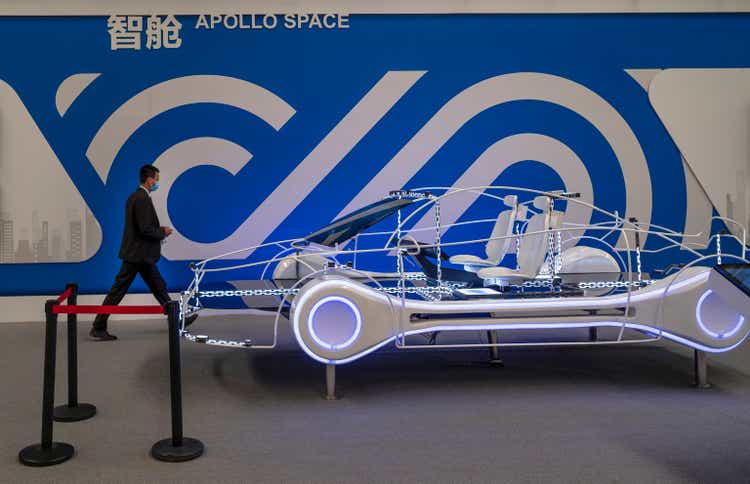Kevin Frayer
By Michael DiTillio, CFA
Not long ago, driverless vehicles were the stuff of science fiction. Today, the rollout of autonomous vehicles is rapidly gathering pace across the globe.
The global transportation industry appears to be metamorphosizing at speed. Driven by demand for greater productivity, improved safety, cleaner air and decreased congestion, breakthroughs in vehicle autonomy, electrification and connectivity are gradually displacing the century-old, internal-combustion-engine model.
In the U.S., Cruise Automation – General Motors’ (GM) robo-taxi unit – has begun shepherding its San Francisco employees during daytime hours and heavier traffic. (The company already offered limited public service in the evenings.) Cruise also plans to offer driverless rides in Phoenix, Arizona and Austin, Texas by the end of 2022, and is expected to expand to more cities across the US in 2023. Meanwhile, Waymo–Alphabet’s (GOOG, GOOGL) self-driving division – has received approval from the California Public Utilities Commission to launch a pilot program in San Francisco, and soon plans to test its vehicles in Los Angeles.
China is even further down the road. Baidu (BIDU), which owns China’s largest fleet of robo-taxis, is now operating in 10 cities and has given around 1.4 million rides to date. In first-tier cities like Beijing and Shanghai, Baidu’s driverless cars can provide an average of 15 rides per day – nearly the same as typical online ride-hailing services. And the lead time to deploy autonomous-driving technology in a new city is only 20 days, the company claims.
Delivery services are also exploring driverless technology, with major players announcing plans to roll out autonomous fleets. Cruise Automation believes that autonomous delivery has the potential to be a big part of its business going forward, and the company is currently testing with Walmart and other partners. In October, Uber (UBER) and Motional announced a 10-year agreement to deploy driverless vehicles within Uber’s ride-hailing and food-delivery network in multiple U.S. markets.
But there’s more to this revolution than the potential for accelerating productivity. Research suggests that autonomous cars can have a major impact on improving road safety and the environment. Given that human error contributed to 94% of vehicular crashes between 2005 and 20071, the U.S. Department of Transportation predicts that the rise of driverless vehicles will help lower traffic deaths substantially. Fewer erratic drivers and accidents are also likely to translate into less congestion and up to 60% lower emissions, estimates Ohio University2.
We believe the future of mobility is autonomous – and we appear to be speeding toward it.
1Source: U.S. Department of Transportation, National Highway Traffic Safety Administration: Critical Reasons for Crashes Investigated in the National Motor Vehicle Crash Causation Survey, February 2015
2Source: The Future of Driving in the United States | Ohio University
This material is provided for informational purposes only and nothing herein constitutes investment, legal, accounting or tax advice. This material is general in nature and is not directed to any category of investors and should not be regarded as individualized, a recommendation, investment advice or a suggestion to engage in or refrain from any investment-related course of action. Investment decisions and the appropriateness of this material should be made based on an investor’s individual objectives and circumstances and in consultation with his or her advisors. Information is obtained from sources deemed reliable, but there is no representation or warranty as to its accuracy, completeness or reliability. All information is current as of the date of this material and is subject to change without notice. The firm, its employees and advisory accounts may hold positions of any companies discussed. Any views or opinions expressed may not reflect those of the firm as a whole. Neuberger Berman products and services may not be available in all jurisdictions or to all client types. This material may include estimates, outlooks, projections and other “forward-looking statements.” Due to a variety of factors, actual events or market behavior may differ significantly from any views expressed.
This material is not intended as a formal research report and should not be relied upon as a basis for making an investment decision. The firm, its employees and advisory accounts may hold positions of any companies discussed. Specific securities identified and described do not represent all of the securities purchased, sold or recommended for advisory clients. It should not be assumed that any investments in securities, companies, sectors or markets identified and described were or will be profitable.
Investing entails risks, including possible loss of principal. Investments in hedge funds and private equity are speculative and involve a higher degree of risk than more traditional investments. Investments in hedge funds and private equity are intended for sophisticated investors only. Indexes are unmanaged and are not available for direct investment. Past performance is no guarantee of future results.
This material is being issued on a limited basis through various global subsidiaries and affiliates of Neuberger Berman Group LLC. Please visit www.nb.com/disclosure-global-communications for the specific entities and jurisdictional limitations and restrictions.
The “Neuberger Berman” name and logo are registered service marks of Neuberger Berman Group LLC.
© 2009-2022 Neuberger Berman Group LLC. All rights reserved.
Editor’s Note: The summary bullets for this article were chosen by Seeking Alpha editors.


Be the first to comment